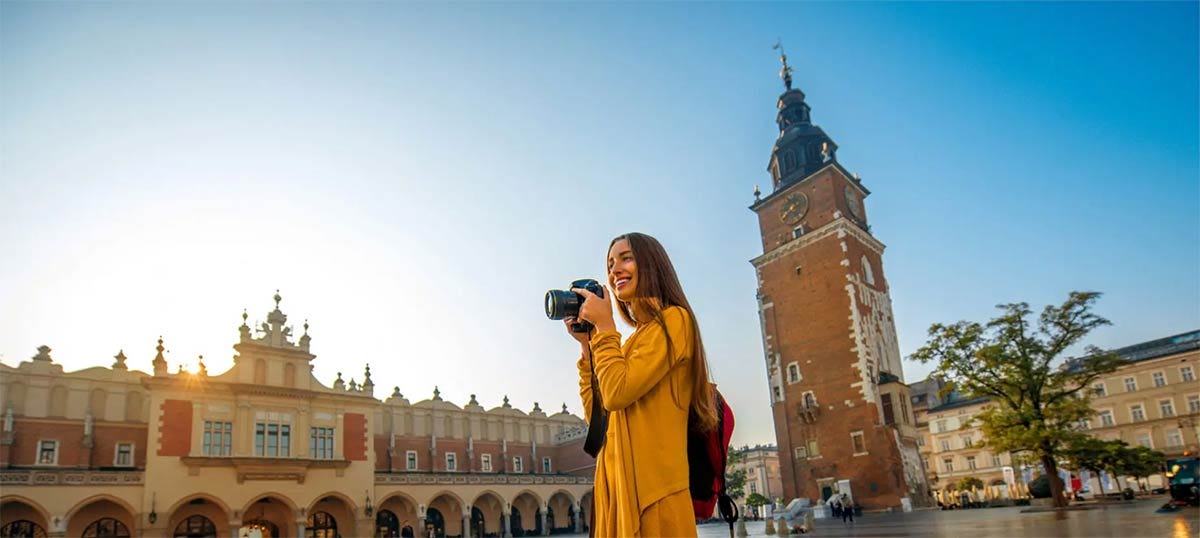5. Italian (82 million speakers)
- First language speakers: 65 million
- Total speakers: 82 million
Italian is the official language of Italy and parts of Switzerland. It’s known for its influence on art, music, cuisine, and unparalleled beauty.
Italy is home to some of the world's most renowned cultural treasures, from the masterpieces of the Renaissance to the operas of Verdi and Puccini. And what can I say about Italian cuisine, with its emphasis on fresh ingredients and traditional recipes. Come on, do you know anyone who doesn’t like Italian food? If yes, they don’t have a cuore!

The language itself is musical and expressive, reflecting the passionate nature of Italian culture. Actually, the language’s musicality is a reason why many people decide to study it, myself included! Ok, my grandfather was Italian and pizza is my favorite food. You can’t beat these arguments.
Italy's vibrant cities, such as Rome, Florence, and Venice, offer a wealth of historical and artistic experiences, and speaking Italian enhances your ability to fully immerse yourself in these environments.
If you’re more of a sole e spiaggia type, you’ll fall in love with dreamy places like the Amalfi Coast, Cinque Terre or the stunning island of Sardinia.
Finally, learning Italian also connects you with a global community of Italian speakers, including those in the Americas and Australia, where Italian immigrants have established significant communities. In a nutshell, mastering Italian enriches your understanding of a culture that has profoundly shaped Western civilization.
And if you’re still thinking about it… where do you think Nutella is from?
Our Italian essentials guide is here to help. Download for free today!
6. Spanish (76 million speakers)
- First language speakers: 47 million
- Total speakers: 76 million
While Spain is the primary country where Spanish is spoken, its influence extends to Andorra and Gibraltar —technically, the UK. It’s also a popular second language in Europe.
Spanish is not only a language of passion and poetry but also of business and politics, with a significant presence in European and global affairs. Spain's diverse regions, each with its unique culture and traditions, offer a spectrum, or abanico — here’s how to use one — of experiences for Spanish speakers.
From the architectural wonders of Gaudí in Barcelona to the fiery flamenco culture of Andalusia and the worldwide famous paella, speaking Spanish allows you to connect deeply with these local traditions.
And to us, Europeans, Spanish is the language of summer holidays, with legendary songs like the Macarena or Aserejé — try to sing that one, it’s ¡muy divertido!
Spanish is also the second most spoken language in the world by native speakers and fourth by total speakers, providing a bridge to over 20 countries in Latin America. Learning Spanish enhances your travel experiences and opens up opportunities in international business, education, and diplomacy.
But maybe more importantly — you can trust me, I’ve lived in Spain for 17 years — Spanish people are extremely welcoming, and their way of life is irresistible. You’d be missing out if you didn’t speak the language!
Download our beautiful visual, FREE Spanish Essentials eBook to help you begin learning Spanish.
7. Polish (40 million speakers)
- First language speakers: 38 million
- Total speakers: 40 million
Polish is mainly spoken in Poland and is one of the most spoken Slavic languages in Europe, reflecting Poland's significant population and diaspora. Poland's rich history and cultural heritage are deeply embedded in the language.
From the medieval architecture of Kraków to the vibrant arts scene in Warsaw, Polish culture offers a surprising blend of tradition and modernity.

The language's complex phonetics and grammar are a testament to its Slavic roots: a fun challenge for language learners!
Poland's strategic location in Central Europe makes Polish an important language for regional business and diplomacy. The Polish diaspora, especially in the UK, the US, and Germany, has also contributed to the global spread of the language.
Poland is a very welcoming country if you want to explore Europe off the beaten track, with historical sites like the old town of Warsaw, places of remembrance like the former Auschwitz-Birkenau concentration camp, and untamed nature like the Tatra mountains.
Learning Polish connects you with a dynamic and resilient culture, allowing a better understanding of Eastern European history, literature, and contemporary society.
8. Ukrainian (32 million speakers)
- First language speakers: 27 million
- Total speakers: 32 million
Ukrainian is spoken mostly in Ukraine and by Ukrainian communities in neighboring countries, and its usage has been growing due to recent geopolitical events. Ukrainian is a language of resilience and pride, reflecting a nation with a deep cultural heritage.
Ukraine's rich traditions in folk music, dance, and craftsmanship are tied to the Ukrainian language. The country's recent history, marked by a strong push for independence and democracy, has further solidified the role of Ukrainian in national identity.
Learning Ukrainian provides a deeper understanding of Eastern Europe's geopolitical landscape and the cultural dynamics of a country at the crossroads of Europe and Asia. The language's melodic quality and unique script make it an interesting choice for linguists and language enthusiasts.
Learning Ukrainian opens up a world of unique traditions, from the colorful embroidery of vyshyvanka to the melodies of traditional songs.
If you want to know more about the Ukrainian language and learn some expressions, check out this article.
9. Romanian (28 million speakers)
- First language speakers: 24 million
- Total speakers: 28 million
Romanian is the official language of Romania and Moldova. It is a Romance language with Latin roots, reflecting the region's historical connections. Romanian bridges the gap between the Latin world and Eastern Europe, offering insights into a unique blend of cultural influences.
The language retains many features of Latin, drawing the interest of both linguists and historians. As a French, Spanish and Italian speaker, I can grab part of a conversation in Romanian without knowing the language.
Romania's diverse landscapes, from the Carpathian Mountains to the Black Sea coast, are steeped in folklore and history. Romanian literature, with its blend of Eastern and Western influences, offers wonderful stories and traditions.
The language is also essential for understanding Moldova, a country with deep cultural ties to Romania. Learning Romanian enhances your ability to navigate and understand the cultural complexities of the Balkans and Eastern Europe.
Whether you're exploring the medieval castles of Transylvania — you probably know their most famous resident — or the vibrant markets of Bucharest, Romanian offers a deeper connection to the country's soul and allows you to engage with its welcoming inhabitants.

10. Dutch (23 million speakers)
- First language speakers: 22 million
- Total speakers: 23 million
Dutch is spoken in the Netherlands and Belgium. It’s also the parent language of Afrikaans spoken in South Africa. Dutch is the language of innovation and creativity, spoken in a region known for its progressive policies, artistic achievements, and trade networks.
The Netherlands, with its iconic windmills, tulip fields, and super cool cities like Amsterdam and Rotterdam, showcases a blend of historical charm and ultramodern dynamism. The country is often considered as an example for its green initiatives, such as its zero-emission zones and ecovillages. Dutch is not only essential for embracing the local culture, but also for understanding its influential role in global commerce.
In Belgium, Dutch is one of the three official languages and is referred to as Flemish. The linguistic landscape of Belgium is fascinating, with Dutch-speaking Flanders to the north and French-speaking Wallonia to the south, creating an interesting cultural and linguistic mix. The Flemish region is known for its medieval towns, intricate lacework, and delicious cuisine, including famous Belgian chocolates and waffles. If that’s not a reason to learn Dutch…
Dutch has a relatively straightforward grammatical structure compared to other European languages, making it an accessible language for learners. It is also closely related to English and German, which can be advantageous if you’re a native speaker of these languages.
The Dutch language has produced a wealth of literature, from the Golden Age masterpieces of Vermeer to contemporary works by authors like Harry Mulisch and Cees Nooteboom. Art wise, I’m sure you’ve heard of Van Gogh, Rembrandt and Mondrian?
Learning Dutch not only allows you to immerse yourself in the culture of the Netherlands and Belgium but also connects you to a global network of Dutch speakers in former colonies and expatriate communities. Moreover, locals really appreciate the effort to speak their language, due to the wide spread of English.
From navigating the picturesque canals of Amsterdam to enjoying the festivals of Antwerp, speaking Dutch enriches your experience and understanding of this dynamic region.
Now that you know what are the most spoken languages in Europe, which one would you learn first?
And if you’re a language nerd like we are, check out the most spoken languages in the world, languages that are easy to learn for English speakers, and some of the most difficult languages — challenge accepted!
Embrace the world of language and culture with our fun, free articles on our language learning blog here.







